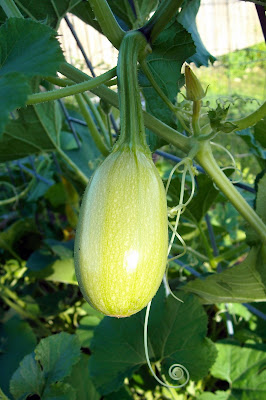This will be a continuing series. Each Monday we will look ahead at the coming week in gardening for the Northwest Arkansas area.
Hurray for rain! We got rain last night after a hot, dry spell. It filled the rain barrel, watered the garden, and knocked the dust down. Despite manually watering the garden during this hot dry spell we've had, there is nothing like a good rain shower for a garden. The collective "ahhhhh" from our garden plants was almost audible. We hope your gardens were equally blessed.
Quick Tip:
If you are growing tomatoes, look at the fruits near the stem. Are the skins cracking? If so, this probably due to irregular watering. To reduce this, monitor soil moisture closely using a
soil moisture meter
or your fingers pushed down 3-4". The soil should be kept as near to a well wrung out sponge as possible. Use drip irrigation or soaker hoses to deeply water your plants as needed.
Things to be on the lookout for:
It seems that we've been posting on pest problems a lot of late. This is the peak time of year for insect activity and our posting reflects that. Before we get down to business, here is a picture of this morning's harvest.
Moving clockwise in the picture above, we have three purple kohlrabi, two cucumbers, six eggs, and four Ronde de Nice zucchini. Those zucchini will be stuffed with a meat sauce, covered in cheese, and baked this evening for dinner.
Squash Bug Nymphs
Related to the leaffooted bug,
squash bugs are an extremely common pest of squash plants. They are particularly attracted to the yellow crook necked squash found in many gardens. The adults and nymphs suck fluids from and inject toxins into the squash plants causing the leaves to wilt, and ultimately, plant death. Beginning in early June, female squash bugs will begin laying egg masses in clusters of 12 or more eggs on the surface (pictured to the right) or more commonly the underside of the squash plant's leaves. We have also observed eggs on the leaf stalks. Those eggs hatch small gray nymphs in about 10 days and these nymphs turn into adults by the end of the summer. The best organic method of control we have found is destroying the eggs by mashing them between the thumb and forefinger. This takes some effort though as the females will keep depositing these eggs until August. A thorough check for eggs once per week will keep them in check. Invariably, some eggs will be missed and hatch out. Use a vacuum suck them up, or if that fails, use diatomaceous earth as we talked about
in this post.
Adult squash bug
Weather outlook:
-Cooling somewhat into the mid to upper 80's
-Chance of rain early and late in the week
-
Ten day forecast
What's being harvested:
-Onions
-Hearing reports of red tomato harvests (ours are still green)
-Green tomatoes
-Cucumbers
-Kohlrabi
-Squash and zucchini
-Squash blossoms
-Celeriac leaves, basil, mint, and other herbs
-Radishes
What's coming soon:
-Red tomatoes
-Peppers
-Baby watermelons

































